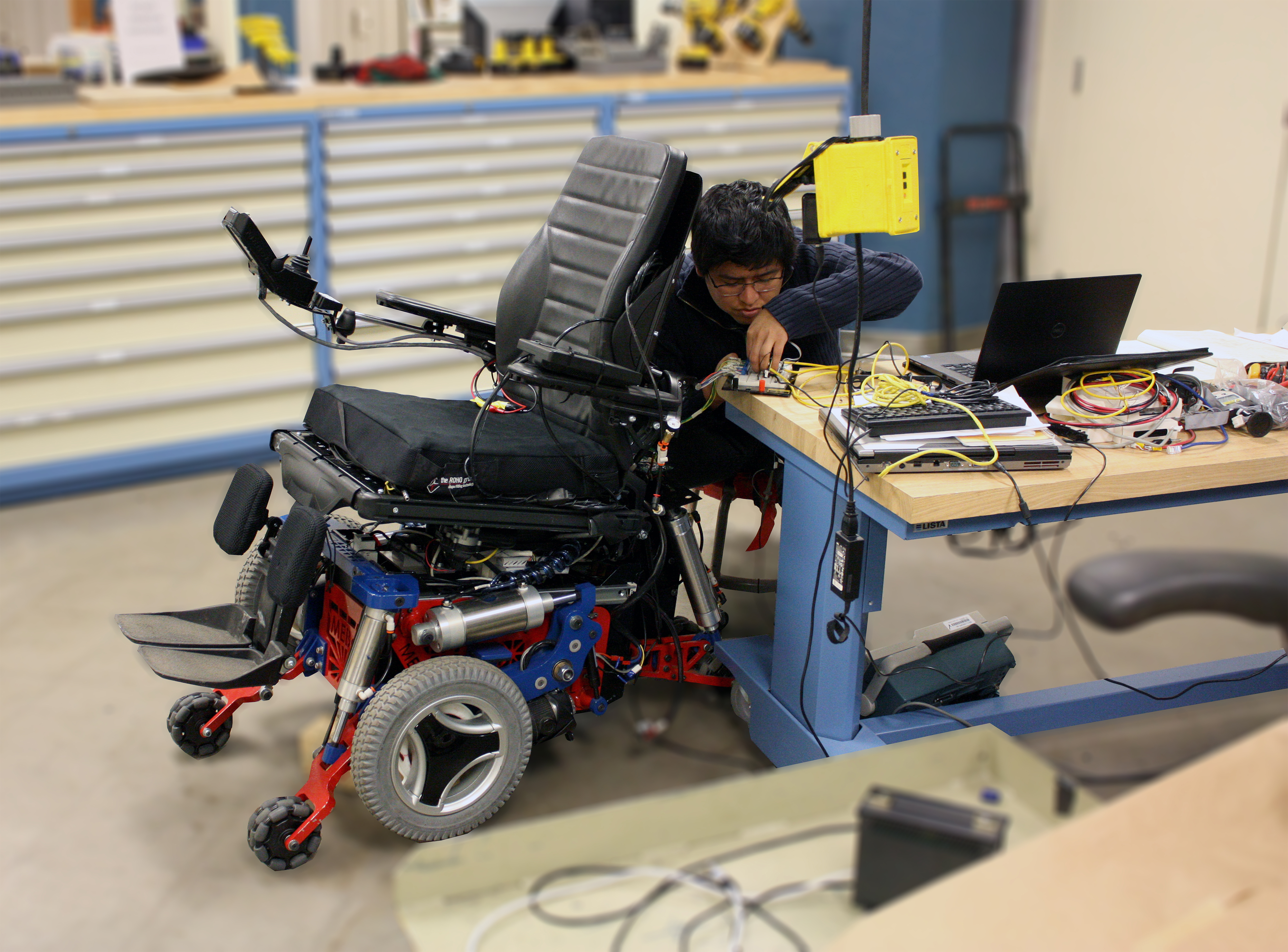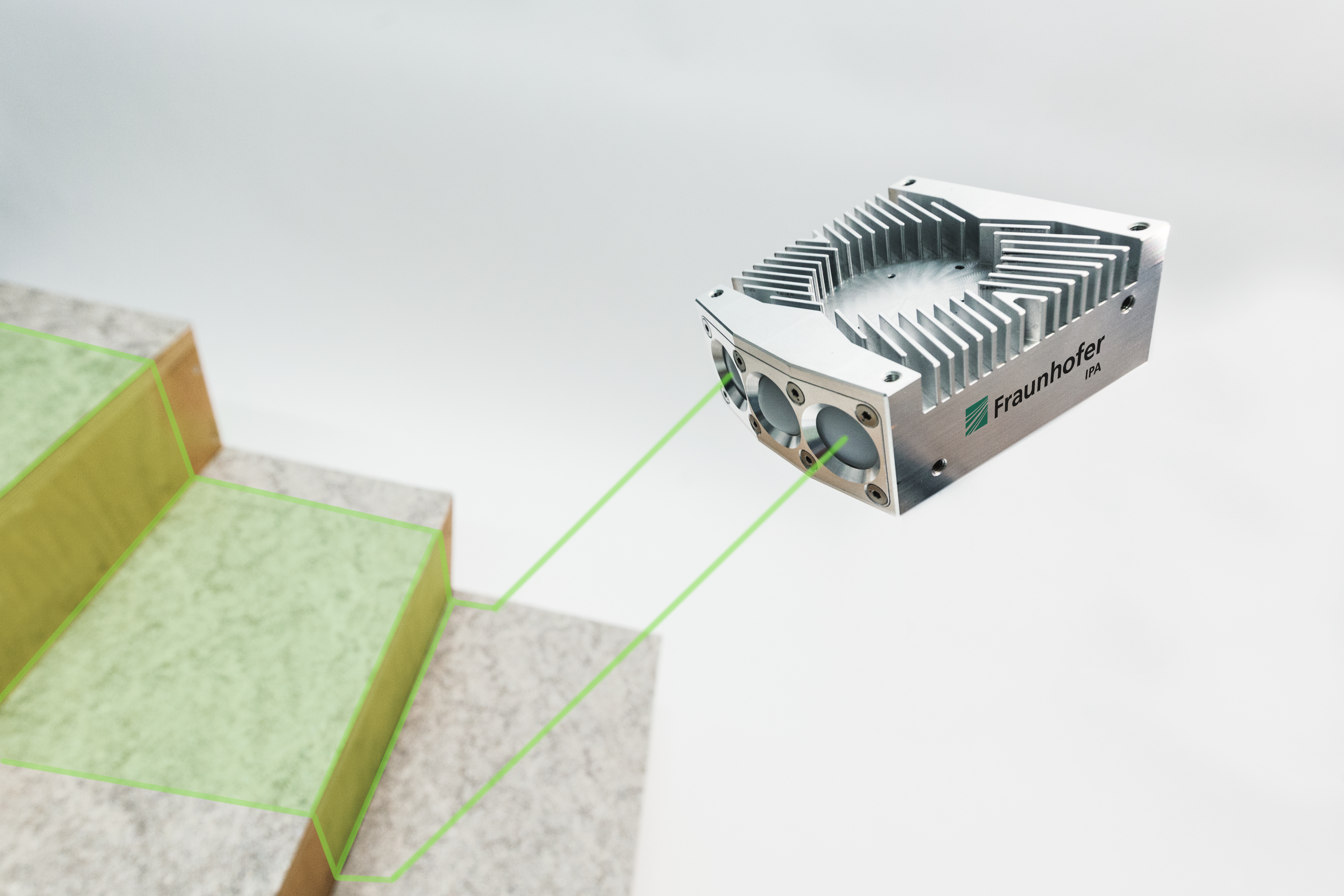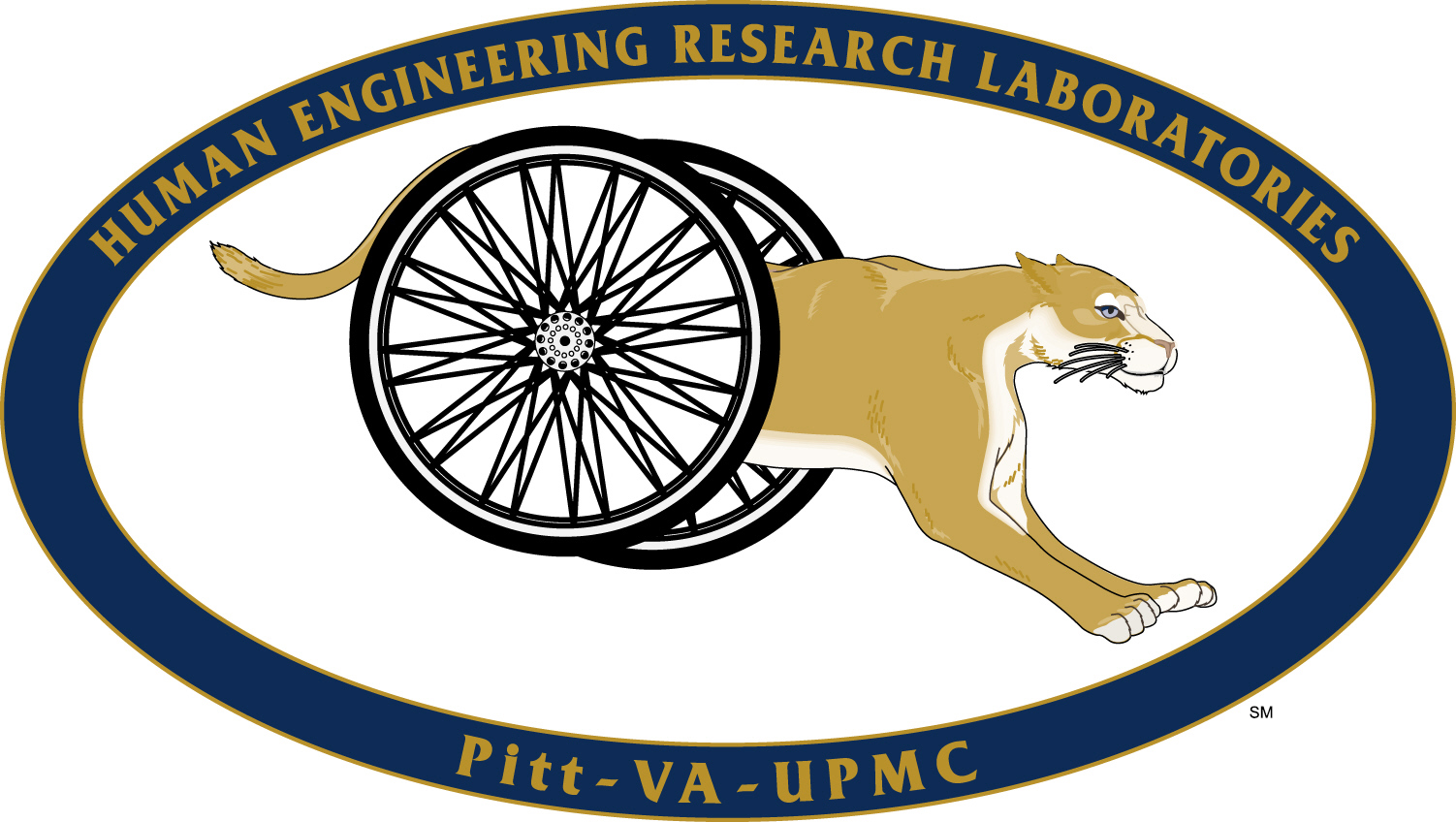The “MeBot” robotic wheelchair can climb steps on its own
Pittsburgh-based Human Engineering Research Lab (HERL) has developed the first ever robotic wheelchair – the MeBot – capable of climbing steps and mounting curbs on its own. The innovation came up against other systems at the first Cybathlon, which will take place at ETH Zürich in Kloten, Switzerland on October 8.



Steps and curbs currently pose a significant issue for wheelchair users. Even the most modern technologies are unable to surmount these obstacles automatically – instead, users have to ask for help, or need a ramp or have to build up momentum to climb up. As Rory Cooper, Director of the HERL points out, “The latter option is particularly dangerous for users, as they risk falling out of the wheelchair, injuring themselves or even being hit by a car”.
Six-wheeled wheelchairs can get over obstacles bit by bit
The HERL hopes that the MeBot will provide a solution to this issue. The world’s largest research laboratory with a focus on wheelchairs has developed a robotic system which can automatically climb steps and curbs. The base of the robot is a pedestal with six wheels, arranged in pairs. The central and largest wheel unit is for driving, while the forward and rear wheel units are for steering. All three pairs of wheels can move horizontally and vertically, independently of each other. As soon as the robot detects an obstacle, the first pair of wheels extends, lifting the vehicle. The middle unit then rises independently which lifts the vehicle over the edge. The final pair of wheels then follows suit. Cooper explains that “This mechanism allows the system to mount obstacles, bit by bit – like a caterpillar”.
Radar module allows object recognition, whatever the weather
Expertise in signal recognition and processing is necessary for the MeBot to mount curbs and steps. This is where researchers at Fraunhofer IPA came into play. The team, led by Bernhard Kleiner, Group Manager for Motion Control Systems, has integrated a radar unit which detects objects with a high degree of accuracy and activates the automated process to mount the obstacle. For this to happen, the system emits beams, which measure the height of the step or curb. This data allows the steering unit to know exactly how the wheelchair needs to be positioned in order to mount the obstacle. If the wheelchair is parallel with the object, the automated mounting process is launched and the step is mounted. Kleiner explains: “We chose a radar measuring unit because, unlike laser or infrared technologies, the system is resistant to environmental influences. Rain, the cold, fog or humidity should not pose a problem”. These features mean that radar systems can be used for many different industrial applications. For example, the IPA scientists have already developed a human detector for robots, as well as other industry 4.0 technologies.
Strengthening international research cooperation
At the Cybathlon, held at ETH Zürich, the MeBot will demonstrate that it is capable of far more than just climbing steps. The demanding course features six obstacles, including narrow doors, a slalom course and ramps. Although it will take several years before the innovation can be put into practice, Kleiner is sure that “HERL’s wheelchair competence combined with our expertise in signal processing means that MeBot is fully capable of maneuvering the chicanes. Our colleagues at the HERL have developed an initial prototype, which we now need to test and make faster”.
The MeBot is not the only innovation being developed jointly by Fraunhofer IPA and the HERL. The two institutes have collaborated in the field of military and civil rehabilitation for many years. Kleiner explains: “HERL experts are focused on wheelchair technologies, whereas we are responsible for drive technology and sensor concepts”. Together, the two partners have worked on a number of developments, including a pneumatically driven wheelchair.